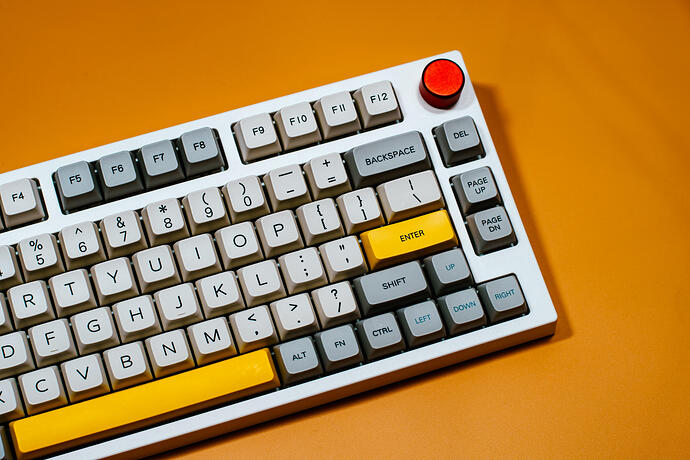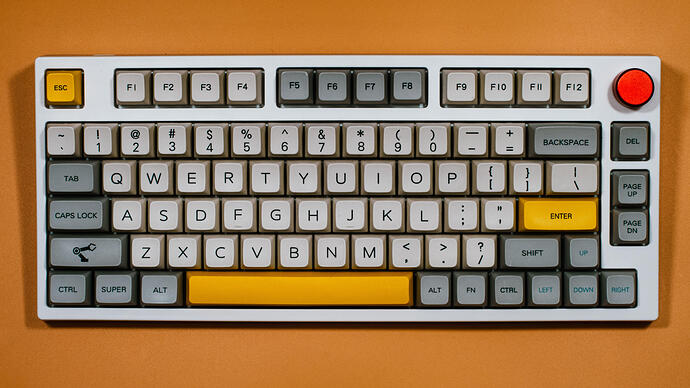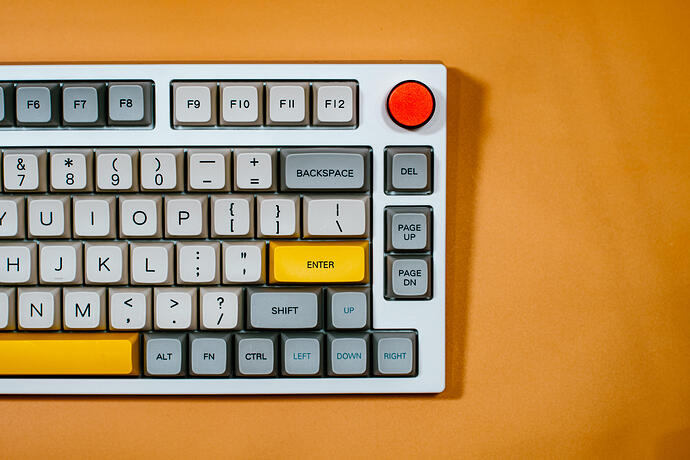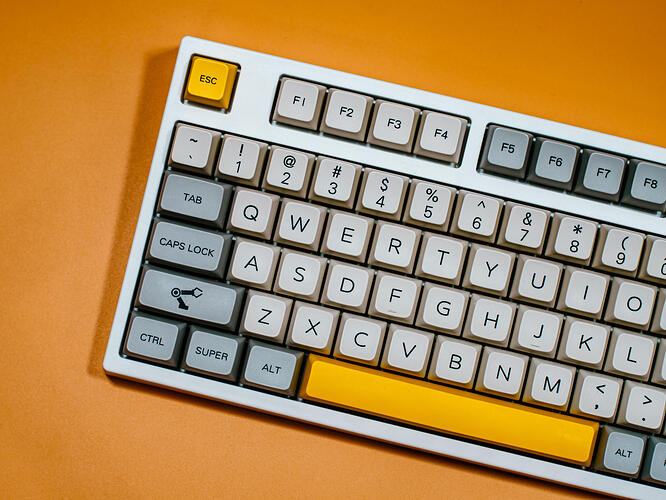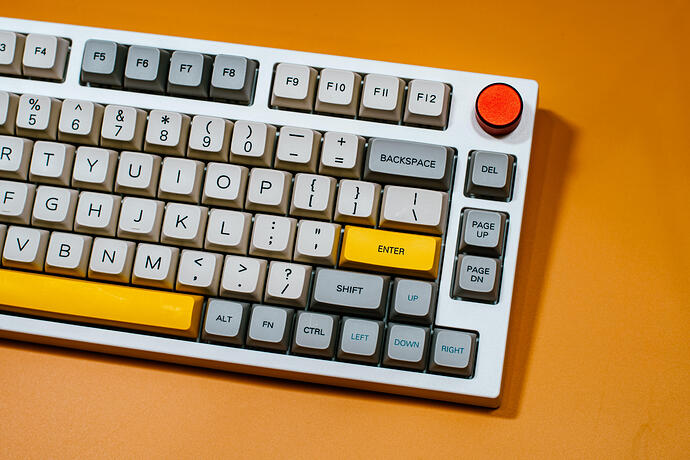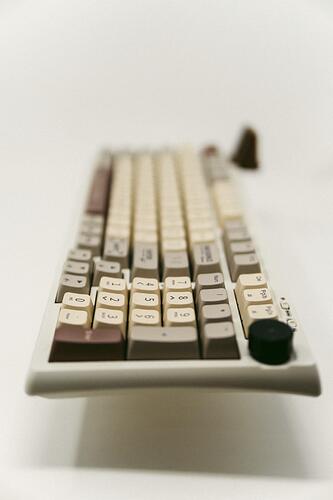Epomaker Theory TH80 Review
The EPOMAKER Theory TH80 is a 75% keyboard kit currently on sale for $89.99 on Amazon. The TH80 was sent to me by a retailer in exchange for my honest review. My board came with Gateron Pro Black switches. I primarily used the TH80 with a PC running Windows 10.
The EPOMAKER Theory TH80 comes in a blue cardboard box. Besides the board itself, the package included a user manual, a keycap puller, and a braided USB-C to USB-A cable.
The EPOMAKER Theory TH80 has a plastic case with a medium bezel and rounded corners. The TH80 is even heavier than the Akko 3068B. The keyboard has a recessed USB-C port on the left side of the board. The bottom of the board has retractable feet to raise the typing angle, a small switch to activate the board’s wireless functionality, and an inbuilt slot which holds the board’s 2.4 GHz wireless receiver when not being used. USB ports are a prized commodity on my PC, so I did not use the 2.4 GHz receiver. I did use the Bluetooth functionality in conjunction with a generic dongle. I used the TH80 at my desk 1–1.5 meters from my computer, so I do not have a real sense of the limits of the wireless range. The keyboard goes into a power-saving sleep mode when using the Bluetooth mode and requires a second or two after an initial input to wake up and begin registering keystrokes.
The EPOMAKER Theory TH80 is my first 75% keyboard. Coming from a more compressed 65% layout, I sometimes hit the “Page Up” or “Page Down” buttons when reaching for the “Delete” key. I do not understand the selection of “Page Up” and “Page Down” as the two additional keys besides “Delete” along the exploded rightmost row of keys. I would rather have “Home” and “End.” Thankfully, these keys can be rebound in the keyboard’s optional software suite. As always, I greatly appreciate having dedicated arrow keys.
The EPOMAKER Theory TH80 includes a knob in the top right-hand corner. I frequently forgot it was there and had to remind myself to make use of it. Part of this is force of habit from using the Windows controls to adjust volume for so long. Additionally though, the knob is harder to actuate than it probably should be. It has very defined steps but the level of resistance that must be overcome to turn the knob is excessive.
The keycaps are dye-sub PBT in MDA profile. MDA is a reduced height SA variant. I do not like this profile as much as Akko’s ASA profile or Epomaker’s own GSA profile. MDA is still higher profile than I would like. The quality of the dye-sub is mostly excellent. The outlines of letters and symbols are very sharp, and the keycaps feel both smooth to the touch and robust in terms of build quality. However, the thickness of lines and lettering is inconsistent for many of the non-alpha keys.
The EPOMAKER Theory TH80 makes use of polyethylene (PE) foam and has the marble-y sound associated with PE. The board is fairly muted in terms of volume. The consistency of the factory lube on the Gateron Pro Black switches is good for the most part but there are some keys which are noticeably scratchier than others. The TH80 has very good stock stabilizers on the modifiers, but the spacebar is not as smooth sounding or feeling. The spacebar appears slightly warped, and there is a slight rattle.
The LED backlighting appears to be limited to solid colors and static RGB without the use of the associated software. Even with the software, the lighting mode options seem limited. The RGB lighting itself is very bright, and the LEDs are south-facing, which eliminates potential interference with Cherry profile keycaps.
The software allows the user to rebind every key other than the default function key, and offers a robust selection of alternative keybindings. This selection includes the media control functions but not the wireless or or backlight controls. I did not use the software for during my review period, as I was mostly satisfied with the stock shortcuts. Worth noting is that some shortcuts, such as “Print Screen” do not match up with what the manual indicates they ought to be. Unfortunately, the user does not appear to be able to add additional function keys.
Overall, the EPOMAKER Theory TH80 is a good prebuilt mechanical keyboard but I recommend lubing the switches yourself and touching up the stabilizers to make it sound and feels its best.
Sound Test:
The EPOMAKER Theory TH80 can be purchased at the link below:
